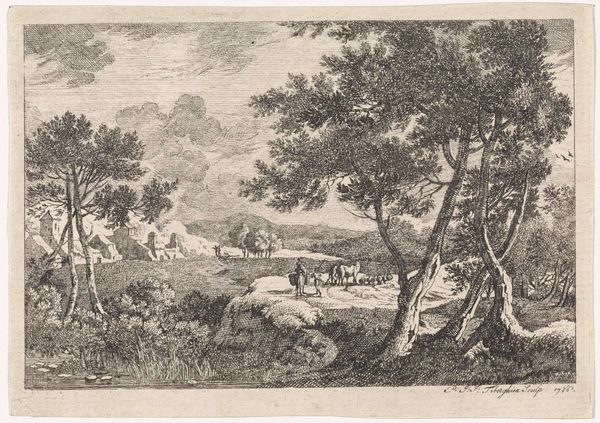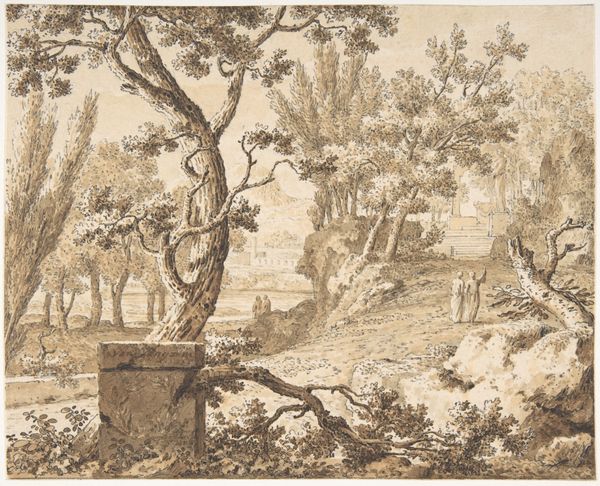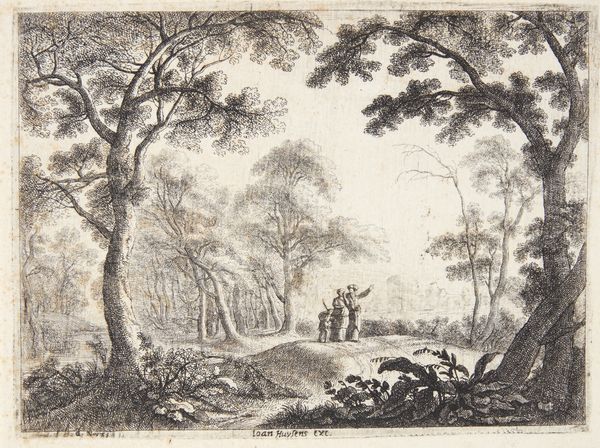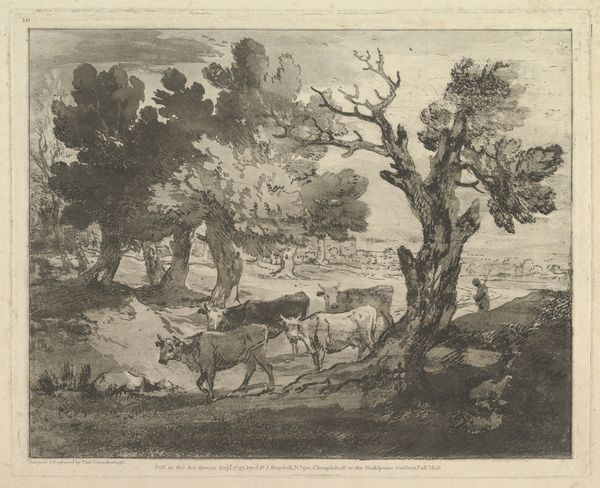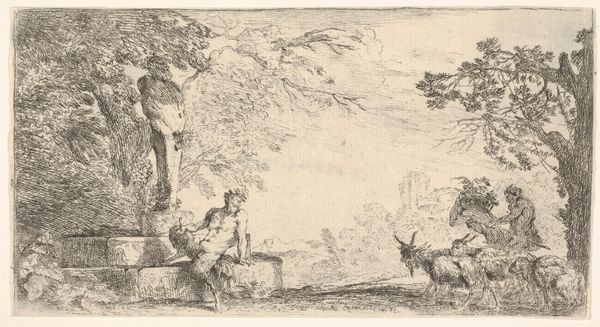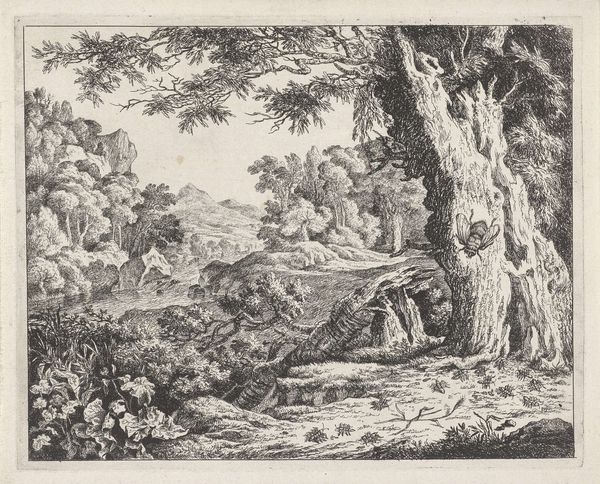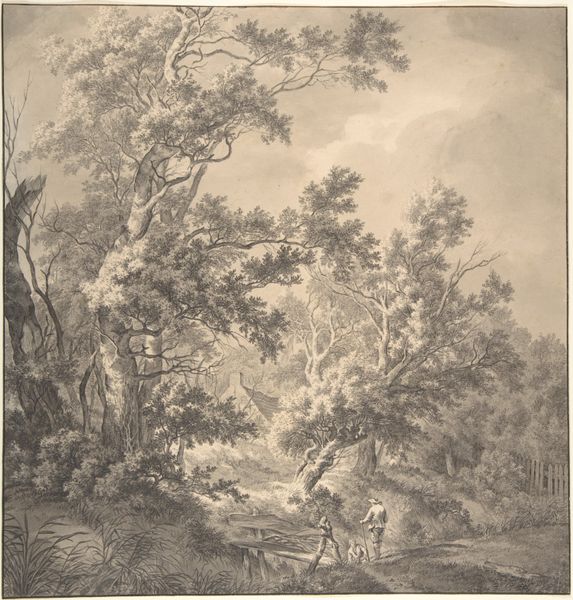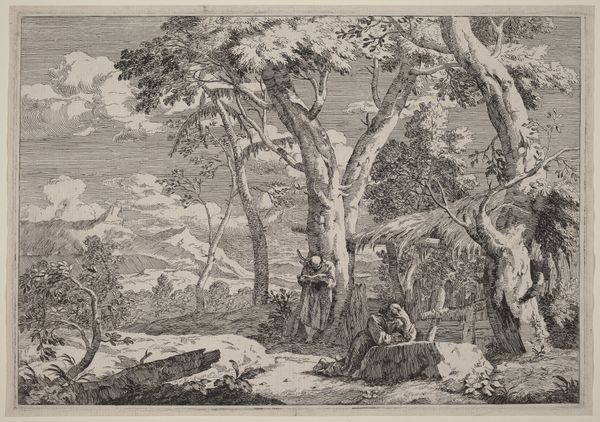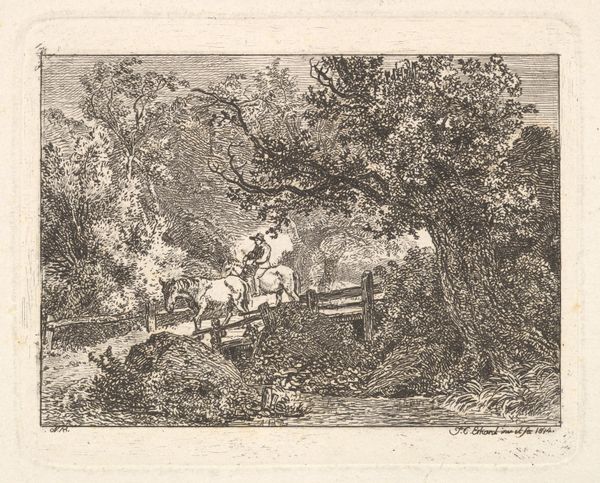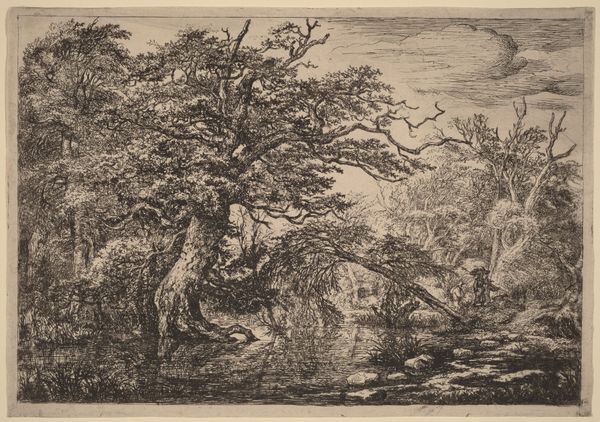
print, etching
#
neoclacissism
#
pen drawing
# print
#
etching
#
landscape
#
genre-painting
#
realism
Dimensions: height 201 mm, width 303 mm
Copyright: Rijks Museum: Open Domain
Editor: Here we have Hendrik Meijer's "Landscape with Cows," made around 1790, using etching and printmaking. It’s so peaceful, a classic pastoral scene, but something about the cows makes it feel almost…staged? How do you interpret this work? Curator: The placid cows are telling, aren't they? Think of them not merely as livestock, but as potent symbols deeply embedded in the visual language of the time. How do these animals relate to broader concepts of prosperity and the perceived harmony of nature during this period? Editor: So, beyond just being cows in a field, they represent prosperity and harmony? Is there a political element to that? Curator: Absolutely. This era, embracing Neoclassicism, idealized the agrarian life. The cow becomes an emblem, loaded with cultural significance representing national identity, stability, and even a subtle nod to an idealized past. The artists selectively omit parts of reality to reinforce ideological principles, and here we see a world remade in the public's image of serenity and success. It's interesting to see how powerful, long-held beliefs still permeate artwork, isn’t it? Editor: It’s amazing how much is packed into what seems like a simple landscape. I’ll never look at cows the same way. Curator: Nor should you. Recognizing symbols unlocks entire layers of meaning in art. The key is understanding how imagery has accrued meaning over centuries, through the shifting sands of culture.
Comments
No comments
Be the first to comment and join the conversation on the ultimate creative platform.
